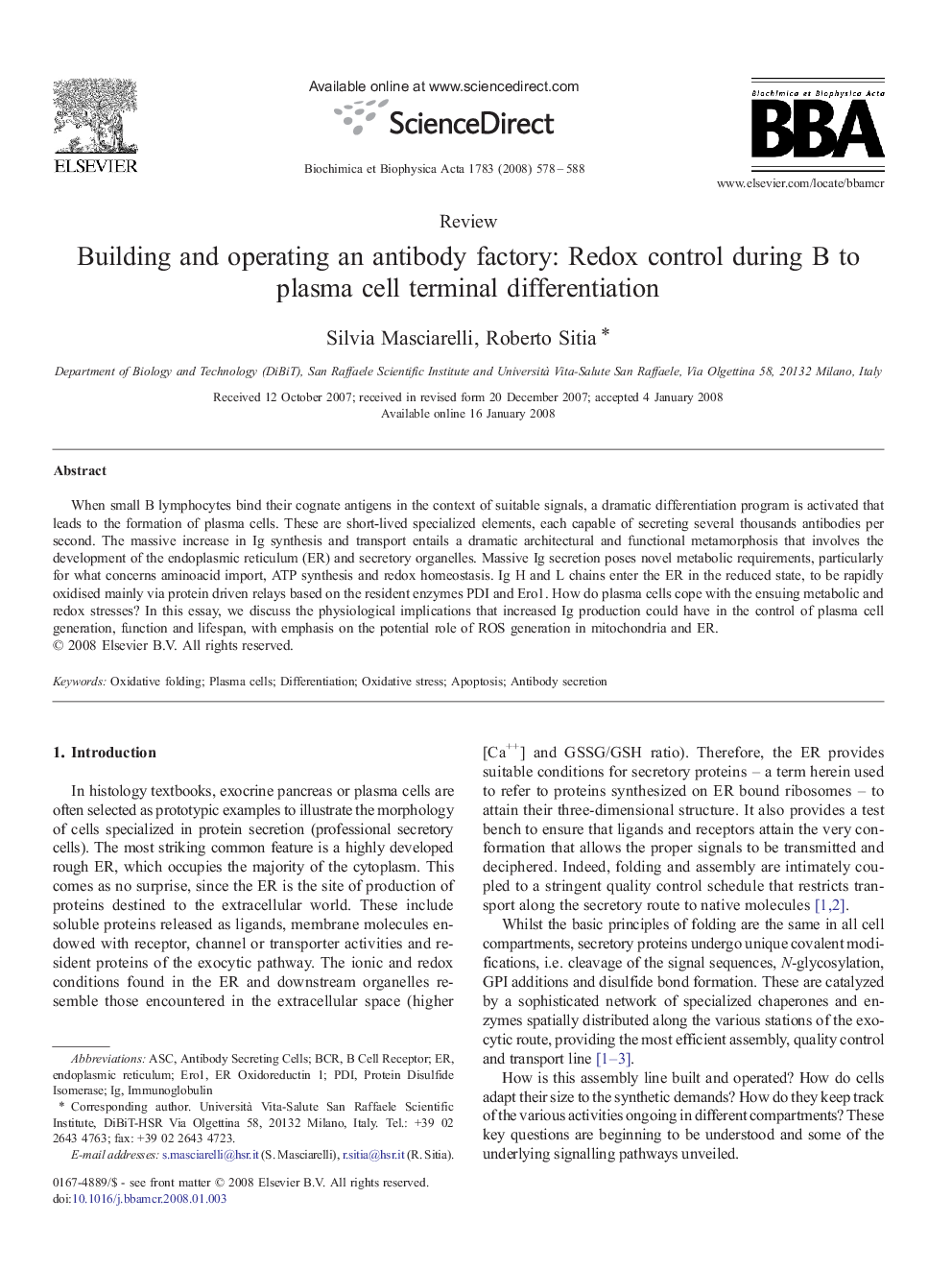| Article ID | Journal | Published Year | Pages | File Type |
|---|---|---|---|---|
| 1951318 | Biochimica et Biophysica Acta (BBA) - Molecular Cell Research | 2008 | 11 Pages |
When small B lymphocytes bind their cognate antigens in the context of suitable signals, a dramatic differentiation program is activated that leads to the formation of plasma cells. These are short-lived specialized elements, each capable of secreting several thousands antibodies per second. The massive increase in Ig synthesis and transport entails a dramatic architectural and functional metamorphosis that involves the development of the endoplasmic reticulum (ER) and secretory organelles. Massive Ig secretion poses novel metabolic requirements, particularly for what concerns aminoacid import, ATP synthesis and redox homeostasis. Ig H and L chains enter the ER in the reduced state, to be rapidly oxidised mainly via protein driven relays based on the resident enzymes PDI and Ero1. How do plasma cells cope with the ensuing metabolic and redox stresses? In this essay, we discuss the physiological implications that increased Ig production could have in the control of plasma cell generation, function and lifespan, with emphasis on the potential role of ROS generation in mitochondria and ER.
